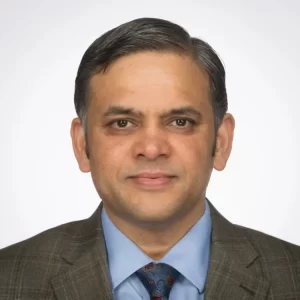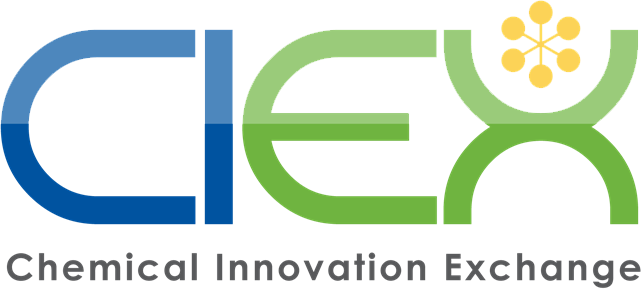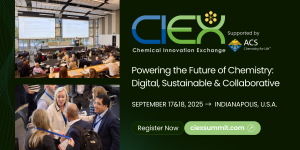Chemical Industry Innovation: Dow’s Use of AI and High-Throughput R&D to Transform Materials Science
Editor’s note: A.N. Sreeram is Chief Technology Officer and Senior VP of Research & Development (R&D) at Dow. Leading the chemical industry innovation in his organization, he will be speaking at our upcoming CIEX 2025 Summit on Sep 17-18, 2025, in Indianapolis, U.S.A. He will be joined by CXOs and VPs of innovation and R&D from 3M, BASF, Sumitomo Chemical, Arkema, DuPont, Evonik, Eastman and many more. Below is a preview of what he will talk about at the summit.
Sreeram leads an exceptional R&D organization focused on accelerating new product commercialization. Under Sreeram’s leadership, Dow transformed its innovation approach by growing high-throughput experimentation and analysis capabilities while establishing a strong connection to market signals and customers. Sreeram joined Dow in 2006 as VP of Core R&D and then served as VP of R&D for Advanced Materials. Prior to Dow, he held R&D leadership roles at DuPont, Cookson Electronics, and Sarnoff Corporation. Sreeram is a Henry F. Whalen Jr. Award recipient, holds 20 U.S. patents, and served on the President’s Council of Advisors on Science and Technology. He earned his PhD from Massachusetts Institute of Technology.

A.N. Sreeram, CTO and SVP R&D, Dow
CIEX: Without giving too much away – what is the core message of your talk, and what would you like delegates to remember?
A.N. Sreeram: Science and technology are advanced by well-trained researchers who rigorously apply the scientific method. Those equipped with the best tools will have the most impact by being able to develop and test hypothesis more creatively, quickly, and thoroughly. More of their time can be spent on the thinking about the actual science rather than on the execution of cumbersome tasks in the pursuit of scientific investigation. Each generation has had a new set of tools available. For example, in calculations, first there were counting stones, then mathematics, then the abacus, the slide rule, the calculator, and the computer.
At Dow, the Lab-of-the-Future is being realized for materials science through the combination of high throughput research, robotics, digital twins, data analytics, machine learning, and artificial intelligence.
CIEX: What motivates you to join CIEX this year?
A.N. Sreeram: The chemicals and materials science industry is absolutely critical in solving some of the world’s most pressing issues. CIEX has become an important forum to bring thought leaders together in a way that will accelerate the pace of innovation that is so urgently needed.
CIEX: In what ways have emerging technologies most significantly transformed your R&D process over the past few years – and what impact has this had on speed to market?
A.N. Sreeram: Dow has been a leader in High Throughput Research for decades, as well as multi-scale modeling and simulations, starting from first principles as much as possible. The recent breakthroughs in data science, computing power, and artificial intelligence have opened new frontiers in how to analyze, understand, and utilize our deep and broad data repository. Researchers now have the ability to more easily challenge existing paradigms by testing high reward hypotheses in a low risk, efficient way. The net impact is not only to expand the opportunity window but also to achieve the target goal expeditiously. R&D hits rates have measurably increased while development times have measurably decreased.
CIEX: What are the biggest challenges – and best practices- you´ve seen in scaling innovation from lab to market while staying aligned with business objectives?
A.N. Sreeram: The challenges in scaling innovation from lab to market, especially at world scale, remain the same as they have always been.
First, the technology readiness must be in sync with the market readiness. Numerous inventions fail to progress into innovations due to the absence of a critical market component, despite the readiness of the innovation for demonstration. Electric vehicles, hydrogen, and nuclear are all examples of technologies that have existed for a long time and are now seeing a renaissance since market dynamics have changed. This, in turn, is driving further innovation.
Second, scaling to world-scale is resource intensive, especially in manufacturing industries which are inherently capital intensive. As an example, Dow has just started up a state-of-the-art polyethylene plant. Such investments take billions of dollars and years of time to execute. Opportunities must be prioritised and full de-risked to make such commitments. All customers and suppliers’ priorities, incentives to commercialize and market demands must be aligned across the value chain.
CIEX: Open innovation, customer responsiveness, and integrated supply chains are gaining traction. What partnerships or collaborations have been most impactful in driving sustainable growth for your business?
A.N. Sreeram: The most successful, impactful innovations are collaborations across the value chain where everyone has an incentive to participate and benefits from success. Some of our most fruitful breakthroughs come after earning a seat at our customers’ design tables. It takes building trust and consistently delivering on a series of commitments for exceptional, reliable products that advance the goals of our customers. Paradigm shifts come from agreeing on what is possible after imagining what could be possible and then on executing shared plans.
For example, Dow and Under Armour have been collaborating for years behind-the-scenes to disrupt the status quo and deliver breakthrough innovations within the athletic shoe space. During one of their routine innovation days, Dow approached UA with a pioneering concept – rubber-less “unisole” shoes that were lightweight and could deliver unprecedented stability and flexibility. Initially, this unisole technology was designed for UA’s running shoes, but after testing prototypes in the gym of UA’s Portland campus with four-time NBA champion Stephen Curry, a new application was dreamed up – basketball shoes. The challenge then became mastering the unique specifications of the material in time to be launched as the inaugural product within the Curry Brand.
Historically, shoe midsoles are formed of several components with rubber outsoles which require a more complex manufacturing process and more weight to achieve ideal performance. Together, a hand selected team of engineers from Dow and UA worked for three years to develop UA Flow – also known by UA as “unicorn foam”- the industry’s first “unisole” foam material that eliminates the need for rubber outsoles.
This depth of knowledge enabled the team to fine-tune the formulation for energy return, shock absorption and traction to enhance the court feel, cushioning and speed of movement without sacrificing durability.
The technical innovativeness and market impact of the Unisole technology were externally recognized by winning a Gold Edison Award.
CIEX: Looking ahead, what do you see as the most critical capability chemical companies must develop to remain competitive in the next decade?
A.N. Sreeram: More than any other industry, materials are the foundation of a safe, healthy, sustainable future. Chemical companies must stay grounded in science-based decision making. The data and the tools available for understanding the underlying science and evaluating the impact of materials are continuing to advance at an unprecedented pace. The industry must stay at the forefront of rigorous analysis, while also being as timely, nimble, and responsive as possible in a rapidly evolving world and stakeholder base.
CIEX: Thank you so much, Sreeram. We look forward to hearing more from you at CIEX 2025!
Powering the Future of Chemical Industry at CIEX 2025 Summit
CIEX is designed for senior-level R&D, innovation, and sustainability professionals from the consumer, industrial, and specialty chemical sectors. Now in its 11th edition, CIEX is focused on creating value by bringing together the right people, fostering synergies, and actively facilitating connections among potential partners.
Join us on September 17 & 18, 2025, in Indianapolis, U.S.A. and get exclusive access to the community powering the future of chemistry — digital, sustainable and collaborative!
Register before 3rd July and save $400 with early-bird pricing!

